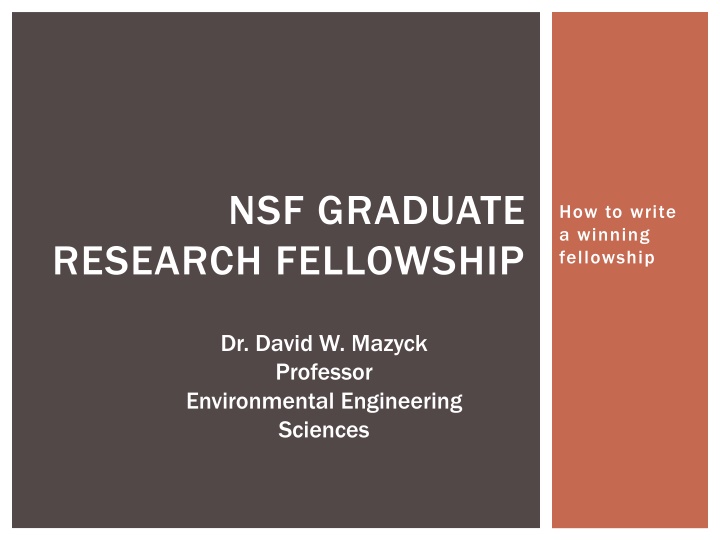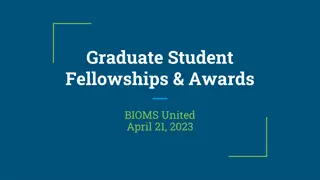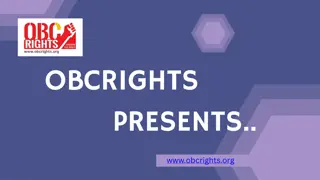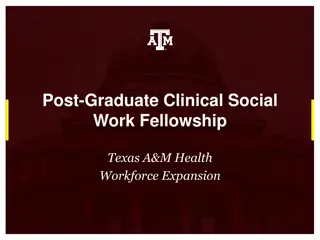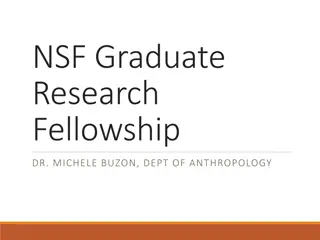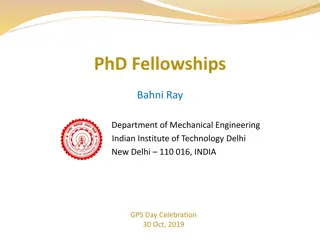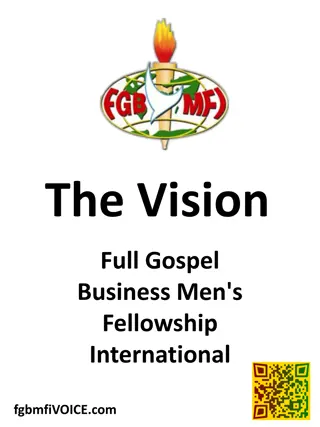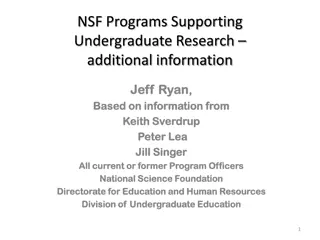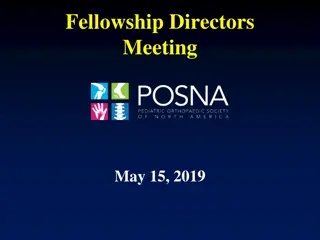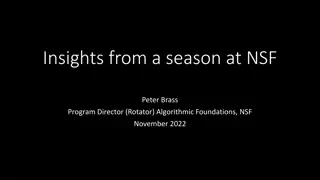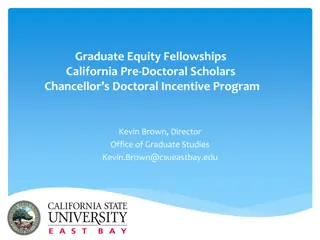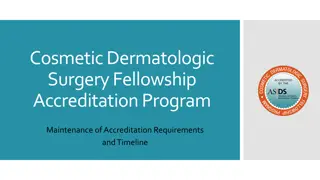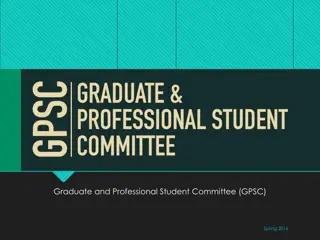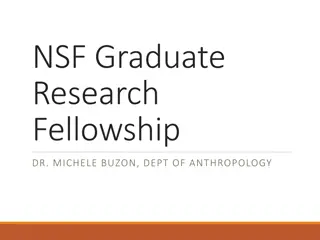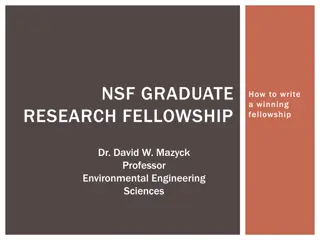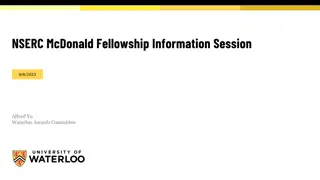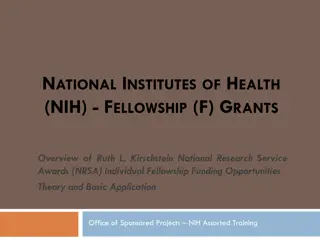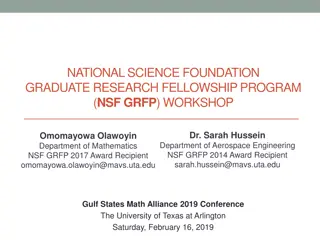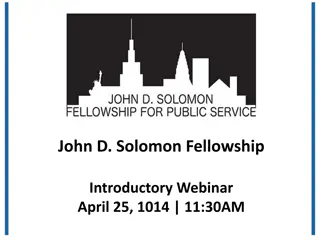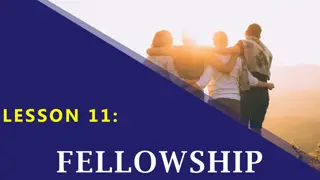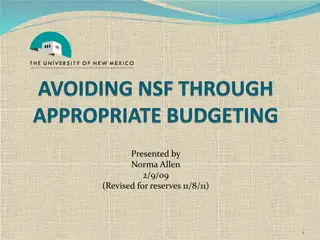NSF GRADUATE RESEARCH FELLOWSHIP
Learn how to craft a compelling proposal for the NSF Graduate Research Fellowship in just 5 minutes to impress reviewers. Understand why applying is beneficial and what materials are required for a successful application. Get insights into presenting your previous research and proposing new research effectively to secure funding.
Download Presentation

Please find below an Image/Link to download the presentation.
The content on the website is provided AS IS for your information and personal use only. It may not be sold, licensed, or shared on other websites without obtaining consent from the author.If you encounter any issues during the download, it is possible that the publisher has removed the file from their server.
You are allowed to download the files provided on this website for personal or commercial use, subject to the condition that they are used lawfully. All files are the property of their respective owners.
The content on the website is provided AS IS for your information and personal use only. It may not be sold, licensed, or shared on other websites without obtaining consent from the author.
E N D
Presentation Transcript
NSF GRADUATE How to write a winning fellowship RESEARCH FELLOWSHIP Dr. David W. Mazyck Professor Environmental Engineering Sciences
Only 5 minutes to convince a tired reviewer, who s not an expert in your field, that your proposal is worth funding.
WHY SHOULD YOU APPLY? Fully funded by a nicely sized stipend + tuition Develops writing skills important skill set required during and after PhD Develops skills planning a series of experiments Provides best opportunity to attend #1 graduate school choice
NSF funds the researcher, not the research -Former NSF Reviewer Translation: They look at your potential to be a researcher
REQUIRED MATERIALS: Personal Statement/Experience/Future Goals Opening memorable paragraph demonstrating your potential to have a long lasting impression on your field Why should they fund you specifically? Distinguish yourself from 20,000 other applicants (most will have a strong GPA) Summarize all your research/internship experiences Be detailed and specific (Intellectual Merit) Examples of leadership, teamwork, outreach, dissemination How will receiving the fellowship contribute to your career goals? What are your future career goals?
REQUIRED MATERIALS: Previous Research: Key Points Why was the research important (Intellectual Merit)? What were the Broader Impacts? Within your field Did you mentor anyone, why does the average person care about your work What did you set out to accomplish? What was your role? What did you learn (overcome any obstacles)? Provide examples of teamwork and independent work List achievements, valuable contributions, dissemination of results
REQUIRED MATERIALS: Proposed Research SHORT introduction and background only to show why your work is significant and/or novel Hypothesis Objectives Research Plan/methodology Make sure plan is feasible (time, resources Intellectual Merit Broader Impacts How will your research contribute to the big picture outside of academia Inclusion of underrepresented students Contingency NO JARGON!
REQUIRED MATERIALS: Letters of Recommendation Who to ask? Research advisor (past and present) Industry/internship if supervisor has a PhD. If not, please see next page. New to UF? 2:1 vs. 1:2 Aunt Ginny? Title? Pedigree MIT is viewed positively Dean, Department Chair, Professor Assistant Professor
REQUIRED MATERIALS: Letters of Recommendation What should they say? Potential to conduct research is outstanding Intellectual Merit of research Novelty Impact on the field Broader Impacts Application to the field Incorporation of underrepresented students
THE REVIEW PROCESS A reviewer has 40 applications! Each application has 3 reviewers Given your essays, transcripts, letters of recommendation, and application forms Rated based on Intellectual Merit and Broader Impacts Review Criteria listed for each on NSF s website
STAND OUT! STAND OUT! Clearly organized easy to find key information Title the background, plan, methods, intellectual merit, broader impacts Use bold, key information Goals, hypothesis, broader impacts bold, italics, and underline for Use pictures! Worth 1000 words Schematics explain a lot while taking up little room
DIRECTLY FROM RATING SHEET: Intellectual Merit Broader Impacts Ability to plan/conduct research To work as a member of team as well as independently To interpret and communicate research findings Integrate research and education to all levels, broad context Encourage diversity, broaden opportunities in science/research Enhance scientific understanding Benefit society
INTELLECTUAL MERIT INTELLECTUAL MERIT Research/Internship experience 7 QUESTIONS 1. What did you do? 2. What did you learn? 3. Did you work in a team? 4. Did you conduct independent work? 5. Did you mentor anyone during the work? 6. Did you publish or disseminate? 7. Did anything fail where you had to overcome any adversity?
BROADER IMPACTS BROADER IMPACTS Mentor undergrad and graduate students Assistance in lab, help them develop posters EXAMPLES Be a guest lecturer for your college/department or local community colleges Work with summer camps that tour campus and lead lab activities and lectures that explain your research Incorporate interdisciplinary studies to widen the impact
BROADER IMPACTS BROADER IMPACTS (CONT D) (CONT D) Develop teaching materials regarding your research Work with a professor for a specific class EXAMPLES Demonstrate link between your research and how it benefits society Specific examples: health benefits, social aid, economic advantage Publish results! Be specific Results will be disseminated in the literature Present at conferences! Be specific
GETTING STARTED Understand what application materials application materials are required Set a timeline timeline for accomplishing small tasks one at a time Start early! Different disciplines have different deadlines Keep NSF s rating sheet essays rating sheet close by when writing your Give copies of essays to professors, peers, friends, family, etc., to proofread proofread as many people as possible!
COMMON POSITIVE REVIEWS Demonstrates ability to plan and conduct research Well written proposal with clear hypothesis Potential to have a real impact Publications and presentations show effective communication Original research idea Demonstrates leadership ability Shows desire and ability to communicate science through outreach activities
COMMON NEGATIVE REVIEWS Benefit to society not well expressed Methods and research plan are not clearly explained Unclear of the significance of this work No mention of how research will be disseminated to the public Limited research experience Research did not result in any presentations or scientific publications Lacks Broader Impacts Lacks Broader Impacts
